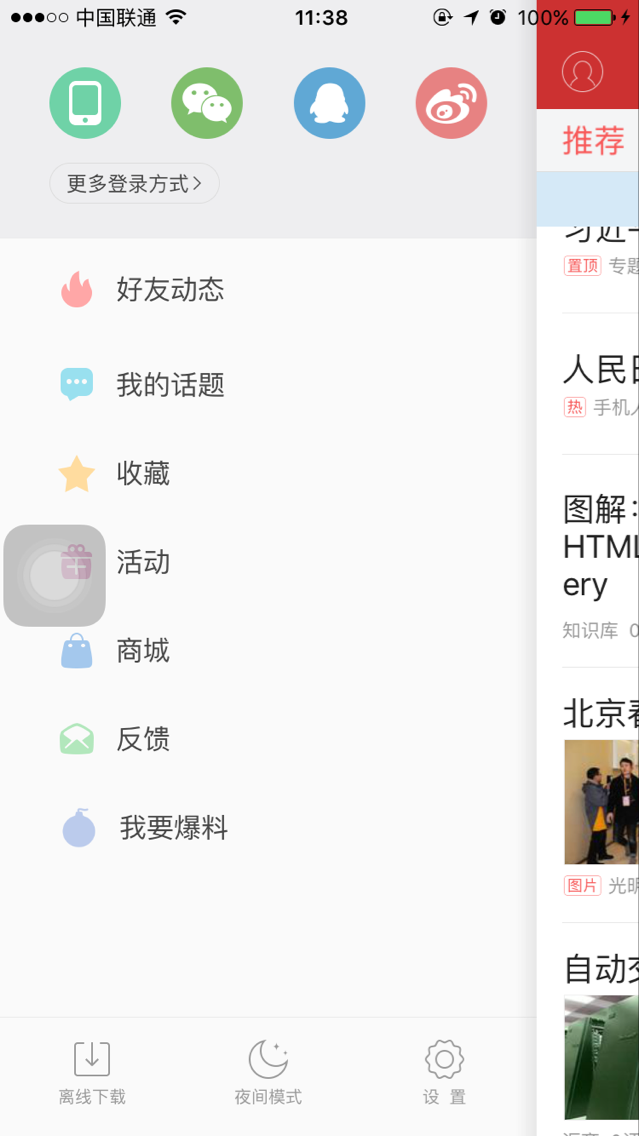詳解iOS游戲開辟中Cocos2D的坐標地位關系
接觸Cocos2D有段時光了,明天特地研討了下Cocos2D坐標系中各類地位關系,anchor屬性,CCNode坐標和地圖坐標轉換。
先看一段代碼:
-(id) init
{
// always call "super" init
// Apple recommends to re-assign "self" with the "super" return value
if( (self=[super init])) {
CCTMXTiledMap *gameWorld = [CCTMXTiledMap tiledMapWithTMXFile:@"PositionText.tmx"];
[self addChild:gameWorld];
CGSize WinSize = [[CCDirector sharedDirector] WinSize];
CCLOG(@"gameWorld.mapSize.width:%.2f gameWorld.mapSize.height:%.2f",gameWorld.mapSize.width, gameWorld.mapSize.height);
CCLOG(@"gameWorld.tileSize.width: %.2f gameWorld.tileSize.height:%.2f", gameWorld.tileSize.width, gameWorld.tileSize.height);
CCLOG(@"WinSize.width:%.2f winSize.height:%.2f", winSize.width, winSize.height);
CCSprite *pointSprite = [CCSprite spriteWithFile:@"point.png"];
[gameWorld addChild:pointSprite z:2 tag:1];
pointSprite.position = ccp(20,20);
pointSprite.anchorPoint = ccp(0.5, 0.5);
CCSprite *rectSprite = [CCSprite spriteWithFile:@"myrect.png"];
[gameWorld addChild:rectSprite z:1 tag:1];
rectSprite.position = ccp(20,20);
rectSprite.anchorPoint = ccp(0.5, 0.5);
}
return self;
}
1、加載地圖:
CCTMXTiledMap *gameWorld = [CCTMXTiledMap tiledMapWithTMXFile:@"PositionText.tmx"];
2、獲得手機屏幕年夜小
CGSize winSize = [[CCDirector sharedDirector] winSize];
3、地圖格子數:
gameWorld.mapSize (10,10)
4、地圖格子年夜小:
gameWorld.tileSize (20,20)
5、全部地圖年夜小:
gameWorld.mapSize * gameWorld.tileSize;
固然這裡所說的是地圖格子是個正方形,非正方形也輕易啦。
6、anchor屬性
1) 添加一個精靈,這個精靈是個像素為1*1的白色圖片,設置坐標為20,20,即在地圖的第一個格子的右上角,設置anchorPoint為(0.5, 0.5)
2) 再添加一個精靈,這個精靈是個像素為20*20的藍色圖片,設置坐標為20,20,即在地圖的第一個格子的右上角,異樣設置anchorPoint為(0.5, 0.5)
運轉後果是矩形精靈的中間和在點精靈的地位,即矩形精靈的錨點為第一個格子的右上角(20,20)坐標 處
去失落兩個精靈的anchorPoint屬性
運轉後果和下面雷同
設置rectSprite的anchorPoint為ccp(0,0)
運轉後果是矩形精靈的左下角與點精靈重合。
設置rectSprite的anchorPoint為ccp(1,1)
運轉後果是矩形精靈的右上角與點精靈重合。
同理設置ccp(0.5, 1) , ccp(1, 0.5)等
由下面可以得出:
1)anchorPoint屬性默許為ccp(0.5, 0.5)
2)當設置(0,0)時是以左下角為錨點
3)當設置(1, 1)時是以右上角角為錨點
4)由此可以本身推論究竟該把錨點設置在哪裡
Cocos2D應用的是OpenGL坐標系
OpenGL坐標系:原點在左下角, X軸向右,Y軸向上
IPhone屏幕坐標系:原點在左上角,X軸向右,Y軸向下
很簡略的斷定辦法:因為Cocos2D的坐標系的原點在左下角。所以精靈外部坐標原點也是左下角,即當anchorPoint為(0, 0)時即以左下角為錨點,為(1,1)時就以右上角為錨點,固然(0.5, 0.5)就是以精靈中間為錨點了。由此可以推算出-2,-3.... 2, 3.... 等值時精靈錨點坐標。
7、坐標轉換
-(id) init
{
// always call "super" init
// Apple recommends to re-assign "self" with the "super" return value
if( (self=[super init])) {
CCTMXTiledMap *gameWorld = [CCTMXTiledMap tiledMapWithTMXFile:@"PositionText.tmx"];
[self addChild:gameWorld];
CGSize winSize = [[CCDirector sharedDirector] winSize];
CCLOG(@"gameWorld.mapSize.width:%.2f gameWorld.mapSize.height:%.2f",gameWorld.mapSize.width, gameWorld.mapSize.height);
CCLOG(@"gameWorld.tileSize.width: %.2f gameWorld.tileSize.height:%.2f", gameWorld.tileSize.width, gameWorld.tileSize.height);
CCLOG(@"winSize.width:%.2f winSize.height:%.2f", winSize.width, winSize.height);
CCSprite *pointSprite = [CCSprite spriteWithFile:@"point.png"];
[gameWorld addChild:pointSprite z:2 tag:1];
pointSprite.position = ccp(20,20);
//pointSprite.anchorPoint = ccp(0.5, 0.5);
CCSprite *rectSprite = [CCSprite spriteWithFile:@"myrect.png"];
[gameWorld addChild:rectSprite z:1 tag:1];
rectSprite.position = ccp(40,40);
rectSprite.anchorPoint = ccp(2, 2);
[self setIsTouchEnabled:YES];
}
return self;
}
- (void) registerWithTouchDispatcher {
[[CCTouchDispatcher sharedDispatcher] addTargetedDelegate:self priority:INT_MIN + 1 swallowsTouches:YES];
}
- (BOOL) ccTouchBegan:(UITouch *)touch withEvent:(UIEvent *)event {
CGPoint point = [touch locationInView: [touch view]];
CCLOG(@"Screen coordX: %.2f coordY: %.2f", point.x, point.y);
point = [[CCDirector sharedDirector] convertToGL: point];
CCLOG(@"OpenGL coordX: %.2f coordY: %.2f", point.x, point.y);
point = [self convertToNodeSpace: point];
CCLOG(@"CCNode1 coordX: %.2f coordY: %.2f", point.x, point.y);
point = [self convertTouchToNodeSpace: touch];
CCLOG(@"CCNode2 coordX: %.2f coordY: %.2f", point.x, point.y);
point = [[CCDirector sharedDirector] convertToUI:point];
CCLOG(@"UIView coordX: %.2f coordY: %.2f", point.x, point.y);
point = [rectSprite convertTouchToNodeSpaceAR:touch];
CCLOG(@"TouchAR coordX: %.2f coordY: %.2f", point.x, point.y);
return YES; CCNode
}
- (void) ccTouchMoved:(UITouch *)touch withEvent:(UIEvent*)event {
}
- (void) ccTouchEnded:(UITouch *)touch withEvent:(UIEvent*)event {
}
下面的代碼添加了UIView的事宜處置。因為屏幕和Cocos2D采取分歧的坐標系,所以我們須要停止坐標轉換。
1)起首獲得屏幕坐標
2)將屏幕坐標轉換為OpenGL的坐標
3)將OpenGL的坐標轉換為Cocos2D的坐標。
從運轉成果可以看出Node1和Node2打印出的坐標雷同。由於Cocos2D給我們寫了covertTouchToNodeSpace辦法,可以看看它的源碼:
- (CGPoint)convertTouchToNodeSpace:(UITouch *)touch
{
CGPoint point = [touch locationInView: [touch view]];
point = [[CCDirector sharedDirector] convertToGL: point];
return [self convertToNodeSpace:point];
}
至於為何OpenGL和Node1輸入既然雷同,為何還要應用convertToNodeSpace,因為才能無限,願望年夜牛們能給告知我謎底。
UIView輸入的是將Cocos2D坐標轉換為屏幕即quartz坐標。
4) convertTouchToNodeSpaceAR是將觸摸點轉換為絕對於rectSprite的坐標
8、斷定觸摸點能否在制訂的精靈上
- (BOOL) ccTouchBegan:(UITouch *)touch withEvent:(UIEvent *)event {
CGPoint point = [touch locationInView: [touch view]];
CCLOG(@"Screen coordX: %.2f coordY: %.2f", point.x, point.y);
point = [[CCDirector sharedDirector] convertToGL: point];
CCLOG(@"OpenGL coordX: %.2f coordY: %.2f", point.x, point.y);
point = [self convertToNodeSpace: point];
CCLOG(@"CCNode1 coordX: %.2f coordY: %.2f", point.x, point.y);
point = [self convertTouchToNodeSpace: touch];
CCLOG(@"CCNode2 coordX: %.2f coordY: %.2f", point.x, point.y);
//point = [[CCDirector sharedDirector] convertToUI:point];
//CCLOG(@"UIView coordX: %.2f coordY: %.2f", point.x, point.y);
CCLOG(@"%d", rectSprite.textureRect.size.width);
CGRect rect = [rectSprite textureRect];
rect = CGRectMake(0, 0, rect.size.width, rect.size.height);
CCLOG(@"orgX: %.2f orgY: %.2f width:%.2f height: %.2f",rect.origin.x, rect.origin.y, rect.size.width, rect.size.height);
point = [rectSprite convertTouchToNodeSpaceAR:touch];
CCLOG(@"TouchAR coordX: %.2f coordY: %.2f", point.x, point.y);
if(CGRectContainsPoint(rect, point)) {
CCLOG(@"You touched in the rectSprite");
}
return YES;
}
9、獲得觸摸的是哪一個tile,並轉變該tile.
CCSprite *rectSprite;
CCTMXTiledMap *gameWorld;
int speed = 10;
-(id) init
{
// always call "super" init
// Apple recommends to re-assign "self" with the "super" return value
if( (self=[super init])) {
gameWorld = [CCTMXTiledMap tiledMapWithTMXFile:@"PositionText.tmx"];
[self addChild:gameWorld];
CGSize winSize = [[CCDirector sharedDirector] winSize];
CCLOG(@"gameWorld.mapSize.width:%.2f gameWorld.mapSize.height:%.2f",gameWorld.mapSize.width, gameWorld.mapSize.height);
CCLOG(@"gameWorld.tileSize.width: %.2f gameWorld.tileSize.height:%.2f", gameWorld.tileSize.width, gameWorld.tileSize.height);
CCLOG(@"winSize.width:%.2f winSize.height:%.2f", winSize.width, winSize.height);
CCSprite *pointSprite = [CCSprite spriteWithFile:@"point.png"];
[gameWorld addChild:pointSprite z:2 tag:1];
pointSprite.position = ccp(20,20);
pointSprite.anchorPoint = ccp(0.5, 0.5);
rectSprite = [CCSprite spriteWithFile:@"myrect.png"];
[gameWorld addChild:rectSprite z:0 tag: 3];
rectSprite.position = ccp(40, 40);
rectSprite.anchorPoint = ccp(0, 0);
[self setIsTouchEnabled:YES];
}
return self;
}
- (void) registerWithTouchDispatcher {
[[CCTouchDispatcher sharedDispatcher] addTargetedDelegate:self priority:INT_MIN + 1 swallowsTouches:YES];
}
- (BOOL) ccTouchBegan:(UITouch *)touch withEvent:(UIEvent *)event {
CGPoint point = [touch locationInView: [touch view]];
point = [self convertTouchToNodeSpace: touch];
CCLOG(@"CCNode2 coordX: %.2f coordY: %.2f", point.x, point.y);
CGPoint tilePos = [self tilePosition:point];
if(tilePos.x == -1 || tilePos.y == -1) return NO;
CCTMXLayer *ly = [gameWorld layerNamed:@"Layer 0"];
if([ly tileGIDAt:tilePos] != 3) {
[ly setTileGID:0 at: tilePos];
}
return YES;
}
- (void) ccTouchMoved:(UITouch *)touch withEvent:(UIEvent*)event {
}
- (void) ccTouchEnded:(UITouch *)touch withEvent:(UIEvent*)event {
}
- (CGPoint) tilePosition:(CGPoint)pos {
CGPoint point;
CCTMXLayer *ly = [gameWorld layerNamed:@"Layer 0"];
if(ly== nil) {
CCLOG(@"Error: Layer not found!");
return ccp(-1, -1);
}
CGSize layerSize = [ly layerSize];
CGSize tileSize = [gameWorld tileSize];
int x = pos.x / tileSize.width;
int y = layerSize.height - pos.y / tileSize.height;
if((x >= 0) && (x < layerSize.width) && (y >= 0) && (y < layerSize.height)) {
point = ccp(x, y);
} else {
point = ccp(-1, -1);
}
if(point.x < 0) return ccp(-1, -1);
if(point.y < 0) return ccp(-1, -1);
if(point.x >= layerSize.width) return ccp(-1, -1);
if(point.y >= layerSize.height) return ccp(-1, -1);
CCLOG(@"%d, %d", x, y);
return point;
}
【詳解iOS游戲開辟中Cocos2D的坐標地位關系】的相關資料介紹到這裡,希望對您有所幫助! 提示:不會對讀者因本文所帶來的任何損失負責。如果您支持就請把本站添加至收藏夾哦!
- 上一頁:iOS完成簡略的抽屜後果
- 下一頁:iOS開辟之微信聊天對象欄的封裝




